May 21, 2025 | 04:20 GMT +7
May 21, 2025 | 04:20 GMT +7
Hotline: 0913.378.918
May 21, 2025 | 04:20 GMT +7
Hotline: 0913.378.918
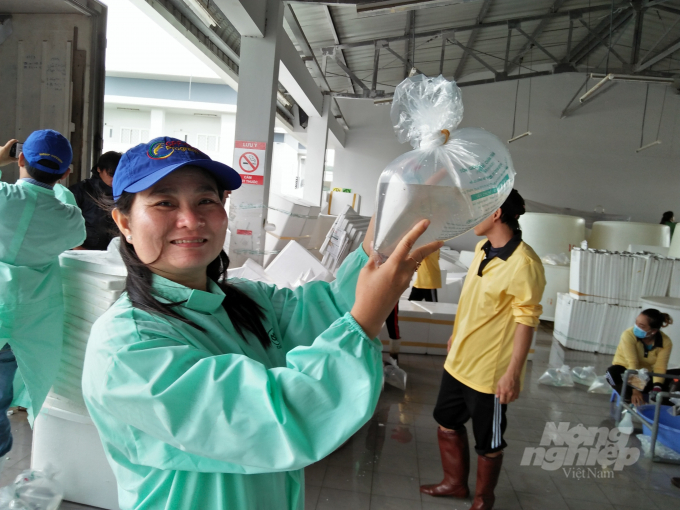
Vietnam's shrimp export industry has great potential for development. Photo: Huu Duc.
By 2022, the market is predicted to provide a variety of favorable opportunities for the Vietnamese shrimp industry. The conflict between Russia and Ukraine has hampered the oil, petroleum, and agricultural industries. As a result, the prices of fertilizer, animal, and aqua feeds fluctuate causing the rising cost of production.
After several years of significant advancements in the application of new techniques and improved shrimp farming technology, the shrimp business has continued to flourish, adding to the agriculture industry's export achievement chain. However, there are still obstacles and limits placed by the farming area. Thus, what are the obstacles to overcome?
The Directorate of Fisheries held a meeting in Soc Trang on March 11 to discuss solutions for developing the shrimp business in 2022 and to sign a regulation on cooperation in the management of brackish water shrimp breeds in 2022.
MARD Deputy Minister Phung Duc Tien presided and assessed the situation, which revealed that despite a challenging 2021, shrimp farming and production outcomes last year met or exceeded goals. The country's shrimp exports were USD 3.9 billion, up 5.4 percent year on year. The shrimp sector, on the other hand, must recognize that the price of farmed shrimp remains high. There has been no investment in infrastructure or irrigation construction. Although the area available for extensive shrimp farming remains large, shrimp farming technology, particularly extensive shrimp farming, remains ineffective.
According to a field study conducted in shrimp farming sites around the localities, there are still certain issues and problems. Shrimp seeds and breeds are highly dependent on their import source. Domestic exploitation of nature can only give a portion of the solution while farmers remain passive producers. Costs of shrimp production remain greater than in other nations in the area. The reason for this is that shrimp feed continues to account for a sizable amount of commercial shrimp growing costs (about 65 percent), and seed is expensive. The majority of infrastructure in the farming area is inadequate.
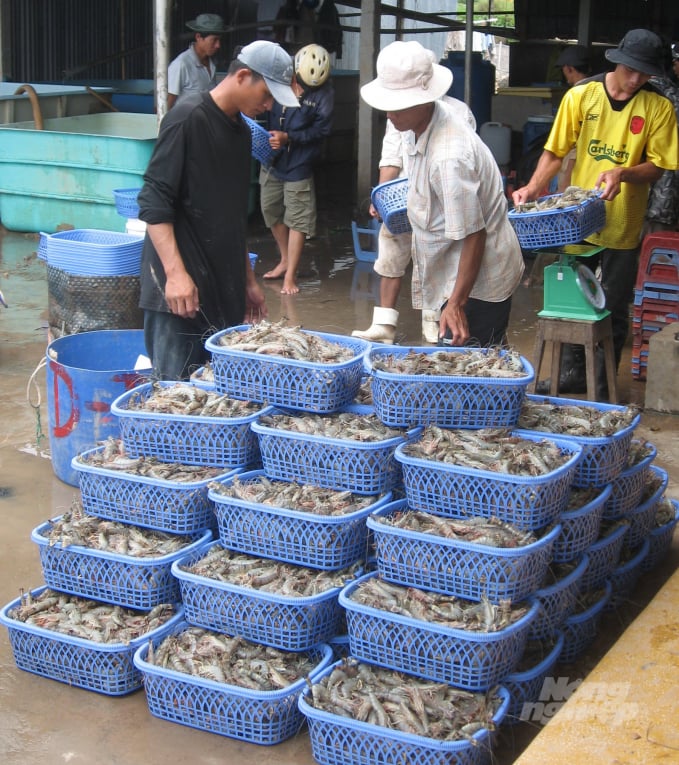
Closely inspect and improve shrimp seed production capacity. Photo: Huu Duc.
In 2022, the shrimp export industry is predicted to show encouraging signs. According to Mr. Truong Dinh Hoe, general secretary of the Vietnam Association of Seafood Exporters and Producers (VASEP), there were over 500 Vietnamese enterprises selling shrimp to 103 markets globally in 2021, with 97 percent of export revenue concentrated in eight major market segments. By 2022, the US is anticipated to remain to be Vietnam's leading shrimp importer. Vietnam's shrimp exports to the US are expected to expand due to the recovery of the HORECA chain and the strength of processed shrimp.
While Europe's trend toward food stockpiling may increase import demand, Japan remains a significant and traditional market for Vietnam's shrimp business, accounting for 15% of total shrimp export value in recent years. With the export results for the first two months of 2022, demand from the Japanese market began to recover, with Vietnamese shrimp producers being the market's preferred supplier.
The main markets, with the exception of China, are projected to restore their demand in the next months. On the other side, inflation is expected to raise manufacturing costs, selling prices, and slow order growth. The Russian-Ukrainian conflict has a considerable influence on logistical costs and operations, posing a significant obstacle to shrimp export development. Thus, while shrimp materials are sufficient for processing, prices will grow further in 2022 due to complicated fluctuations in input factors.
At the conference on the predicted problems in 2022, Deputy Minister Phung Duc Tien recognized thoughts and opinions from responsible ministry departments and local authorities. As a result, agricultural production activities, such as the shrimp business, require adaptable solutions in order to overcome obstacles. Shrimp aquaculture is limited by the lack of infrastructure, environmental pollution, diseases, input materials (aquatic feed), chemical supply, and logistics. The Covid-19 outbreak condition also has an effect on the industrial chain.
However, there are opportunities arising from the hardship; the Deputy Minister emphasized the shrimp industry's enormous potential. According to VASEP, the shrimp sector will grow by 57% in value and 24% in volume by 2022.
To begin, the industry should analyze the components necessary to enhance its competitive capability, both in terms of value and volume. Seeds must be monitored and managed, while seed production capacity must be enhanced. Second, it is critical to research input materials to reduce feed costs. Third, more effective disease monitoring, warning, and management to improve the quality of farmed shrimp. Simultaneously, linking to develop into new markets and having more export shrimp goods fulfill the market's stringent specifications.
According to the Directorate of Fisheries, brackish water shrimp farming would cover more than 747,000 hectares in 2021, with 626,000 hectares given to black tiger shrimp and 121,000 hectares to white leg shrimp. Shrimp output was 970,000 tons, an increase of 4.3 percent over the same time in 2020.
According to VASEP, Vietnam's shrimp exports are predicted to increase by 10%-12% in 2022. Exports surpassed USD 4 billion.
Translated by Linh Linh
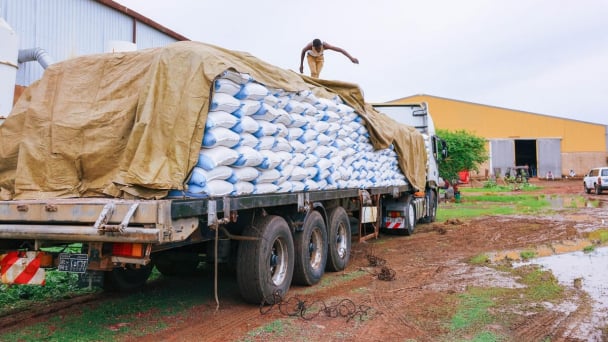
(VAN) In 2024, over 295 million people across 53 countries and territories faced acute hunger—an increase of almost 14 million people compared to 2023, while the number of people facing catastrophic levels of hunger reached a record high.

(VAN) World Environment Day 2025 (June 5) carries the theme 'Beat Plastic Pollution' continuing to emphasize the global urgency of addressing the plastic waste crisis.
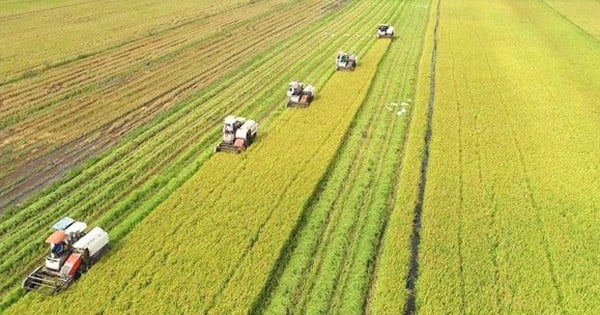
(VAN) This was the assessment shared by experts at the workshop titled 'Assessing the Role and Potential of Low-Emission Rice Production Systems in Vietnam,' held on the morning of May 19.

(VAN) Cai Rong Port is the fisheries control center of Quang Ninh, helping to monitor fishing vessels, combat IUU fishing, and remove the EC's 'yellow card'.
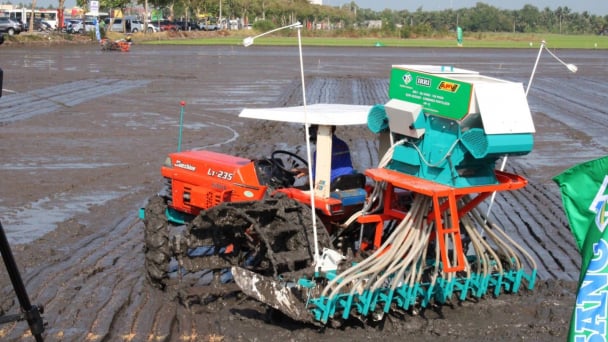
(VAN) The German Agricultural Society (DLG) explores the possibility of establishing a mechanization service center in Vietnam’s Mekong Delta to support farmers in accessing and utilizing advanced machinery.
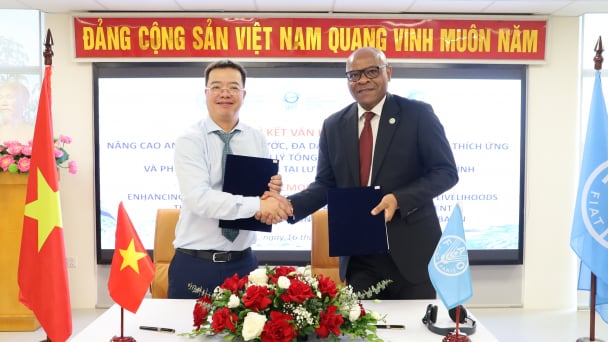
(VAN) On May 16, the Department of Water Resources Management, in collaboration with the Food and Agriculture Organization of the United Nations (FAO), held a signing ceremony for the GEF-8 project document.

(VAN) Food safety, mechanization, vocational training, and market opening are key areas of cooperation expected between the Vietnamese Government and the Federal Republic of Germany.